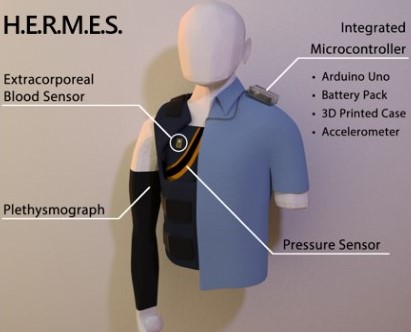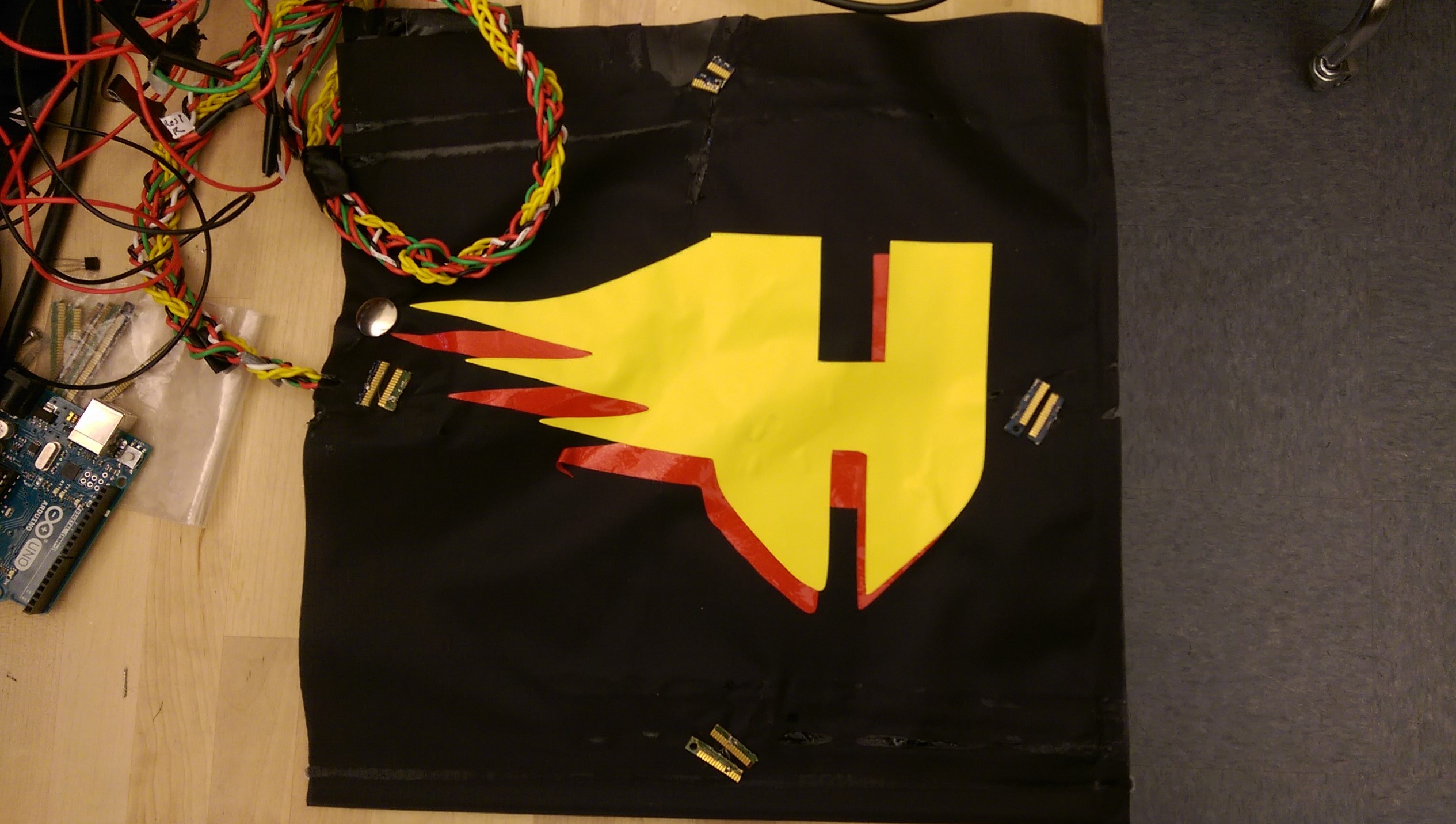Overall Design
Integrative Sketch Designs are found here.

Version 1.0 of the sketch of the vest is found here from January 17, 2017.
Version 2.0 of the sketch of the vest is found here from January 24, 2017.
The 3-D model generated to the right is an outgrowth of preliminary sketches.
As seen, our device retrofits existing ballistic vests in order to detect essential biometric measurements, as well as allows for detection of the external environment.

Zooming in on the vest, the layers of the device can be seen. The gray pouch layer provides a waterproof layer that allows for wicking of extracorporeal blood. Blood can be detected by the glucose oxidase coated electrodes, seen in gold.

The components of the pouch are seen in greater detail above. The black velostat layer used to sense respiratory rate and low magnitude forces is seen between two layers of a conductive copper or aluminum foil. This layer is also found within the pouch.

An overall system crossview is shown above. The layers of the pouch, going towards the chest of the officer, are shown. The pouch is made of a heat sealed plastic layer that contains the primary sensors: the accelerometer, force sensor, and pressure conductive sheet. These layers are protected from water damage of the circuitry by the plastic layer. Extruding from the plastic layer are the external blood glucose sensors. These sensors have been tested and are non-responsive to sweat and other sources of non-physiologic glucose.


A rendering of the case that holds our Arduino microprocessor, power supply, and Bluetooth module is attached. All wires running to the pouch will extend from this shoulder mounted case. The 3-D printed case is seen above. Future iterations of design would utilize a flexible printed circuit board (PCB) that integrates the functionalities afforded by the Arduino microprocessor.

An outline of the wire layout juxtaposed to the vest provides a visualization of what the vest’s final layout will appear to be. Green arrows represent the sensory outputs from sensors, Brown arrows are local grounds, and Yellow represents the power supply.

The physical pouch is seen above, with the glucose sensor electrodes protruding from the surface of the vest. The braided wires serve as the interface between the pouch and Arduino microcontroller at the officer’s shoulder.
©2025 Vanderbilt University ·
Site Development: University Web Communications